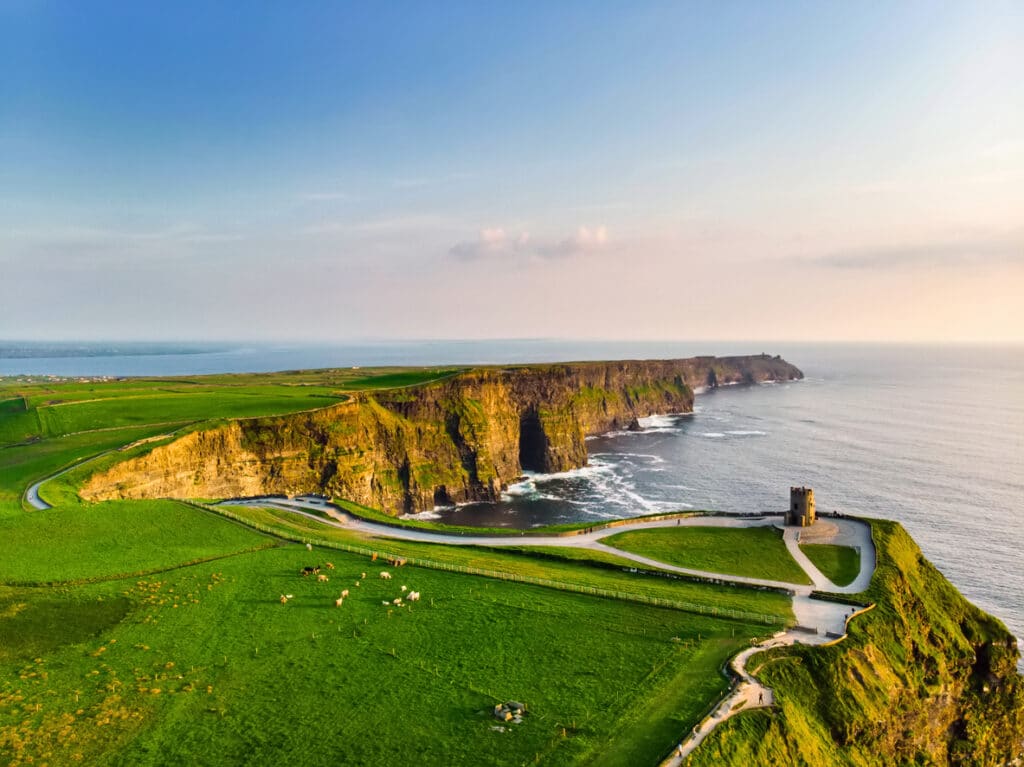Which country is better for investing in real estate, Panama or Costa Rica?
Americans looking to move abroad while staying within the North American continent are increasingly asking this question.
Both Latin American countries offer tropical climates, unspoiled nature, and vibrant expat communities. Of course, the two countries differ in some key ways—these differences are notable when comparing the real estate markets, tax laws, cost of living, and overall vibes.
Below, we’ll walk you through investing in real estate in both Panama and Costa Rica. Read on for a breakdown of each country’s real estate prices, purchase processes, taxes, lifestyles, and more.
Key Updates for 2025
- Panama’s real estate market is stabilizing after the 2024 protests, with renewed investor interest in urban and beachfront properties.
- Costa Rica’s property prices continue to rise, especially in expat-heavy areas like Guanacaste and the Central Valley.
- New tax incentives in Panama may make investing in eco-friendly developments and tourism-related properties more attractive.
Country snapshots
Panama
- Population: 4.5 million
- # of Americans: ~20,000-30,000
- Monthly cost of living (minus housing): ~$779 for one; $2,804 for a family of four
- Top expat areas: Panama City, Bocas del Toro, Coronado, Boquete, Chitre
Costa Rica
- Population: 5.2 million
- # of Americans: ~70,000
- Monthly cost of living (minus housing): ~$862 for one; ~$3,136 for a family of four
- Top expat areas: San Jose, Heredia, Tamarindo, Atenas, Quepos
Real estate purchase overview
Purchase rights
Both Costa Rica and Panama have policies that encourage foreign investments in real estate. When it comes to purchasing and owning property, foreigners have the same rights as locals. Foreigners don’t even need to be living in the country already or have a residence visa before they can buy real estate.,
In fact, both countries offer pathways to residence through real estate purchases. In Panama, the Friendly Nations visa grants residence to Americans who purchase real estate worth at least $200,000. Costa Rica’s investor visa has an even lower qualifying threshold of $150,000.
Purchase process
The process for buying property in Panama as well as Costa Rica isn’t too different from buying property in the US. Generally, you will need to:
- Identify the property you want & negotiate a price
- Draft a sale contract
- Conduct due diligence on the property (e.g. appraisals, surveys, title search)
- Sign the contract
- Pay agreed-upon property price, fees, & taxes
- Register the property & transfer title ownership
While you don’t necessarily need professional assistance to purchase property in either country, most expats choose to do so anyway. Real estate agents can help expats find properties, negotiate, overcome language barriers, and more.
Many expats also choose to hire a knowledgeable local real estate attorney, who can be especially helpful in procuring and reviewing legal documents like sales contracts, loan agreements, property appraisals/surveys, etc.
In both countries, deposits are typically about 10% and closing takes between one to two months.
Notable regulations
In both Panama and Costa Rica, buying coastal property usually works differently than buying inland property. Those who “purchase” shoreline property often don’t own it outright.
In Panama, buyers lease shoreline property from the government for a fixed period (e.g. 20 years), after which point they must re-sign to stay. In Costa Rica, you can only hold 49% of shoreline property and must purchase it through an LLC.
Depending on how close the property is to a body of water, it may even be illegal for owners to prohibit public waterfront access. There may also be restrictions on how much and where you can develop on the land — especially in high-tide zones.
Real estate market overview
The real estate markets in both Costa Rica and Panama have seen significant growth in recent years, thanks to:,
- General political & economic stability
- Growing middle classes
- Infrastructure improvements
- The rise of digital nomadism
- Increasing levels of tourism
- An influx of retirees
However, average prices remain significantly lower than in the US — presenting an attractive opportunity for investors.
Both countries have particularly hot real estate markets in bigger cities and areas frequented by tourists and expats. Among the most in-demand property types include:
- Urban housing
- Luxury rentals
- Beachfront properties
- Mountain retreats
At present, there are no major legislative changes or regulations pending that would jeopardize real estate market health. Primary risk factors include global economic fluctuations and natural disasters, particularly those caused by climate change.
Keep in mind that cash purchases reign supreme. It can be tough to secure loans or financing — and when they do come through, rates are often high.
Panama-specific real estate trends
In Panama, overall price increases due to the growing economy and population have cooled somewhat since the widespread October protests. Beyond that, there is a notable oversupply of commercial and office real estate. That said, now may be a good time to take advantage of the resulting decreased prices.
There is also a great deal of confidence that prices will rebound (and then some) due to:
- The growing, diversified economy
- The increasing population
- The strategic location of the Panama Canal, a major driver of economic activity + jobs (& therefore, housing demand)
- The opening of a major new airport terminal
A few prime types of investments include fincas (countryside estates), skyscraper units, and golf course townhomes. Particularly popular areas to invest in include:
- Bocas del Toro
- Pedasi
- Panama City
Costa Rica-specific real estate trends
Real estate in Costa Rica tends to be slightly more expensive compared to Panama due to factors like its:
- More well-known status as a tourist/expat/retiree/digital nomad destination
- Longer history of political & economic stability
- Slightly lower crime rates
Having said that, it’s not impossible to find property at a reasonable price in Costa Rica.
Among the most in-demand property types in Costa Rica include eco-friendly developments, condos, and homes in gated communities. Some of the best areas to invest in include:
- Guanacaste
- The Central Valley (including San Jose & surrounding suburbs)
- The Caribbean coast (including Cahuita, Manzanillo, Punta Uva, etc.)
Tax considerations for potential property owners
While Panama and Costa Rica levy certain taxes on property purchases, ownership, and sales, they are lower than in the US. Below is a breakdown of some of the most common taxes for property owners:
Panama
Panama’s property purchase taxes include the following:
- New constructions: .5% to 4.5%, depending on value & type (e.g. commercial vs. residential)
- Existing properties: 2% transfer tax, 3% advanced payment on future capital gains
- Registration: .3%3
- Notary fees: 1%
When it comes to property ownership taxes, here’s what you may need to pay:
- Primary residences: 0% to .7%, depending on property value
- Other residences: 0% to 1%, depending on property value
- Rental income taxes: 0% to 25%, depending on overall income
Note:
Property owners may exclude up to $120,000 of the value of primary and habitual family homes from taxation. Those of retirement age (57 for women, 62 for men) may also claim this benefit. New constructions, meanwhile, may be exempt from taxation for five, 10, or 20 years, depending on their value.
Property sale taxes include:
- Capital gains tax: 10% (unless you paid the initial 3% income tax advance)
Costa Rica
Costa Rica’s property purchase taxes:
- New constructions: 13%
- Existing properties: 1.5% split between seller & buyer
- Stamp duty: 0.85%
Property ownership taxes you may need to pay involve:
- Property tax: .25%
- Rental income taxes: 15% (only 85% of rental income subject to tax)
Property sale taxes include:
- Capital gains tax: 15% on properties held up to two years, 10% on properties held for more than two years
- Transfer tax: 1.5%
- Stamp duty: 0.85%
Pro tip:
Legal residents of Costa Rica are exempt from capital gains taxes on the sale of their primary residences. Sales of secondary residences are exempt from capital gains taxes as well if they were held for five years or more first.
Life in Panama vs. Costa Rica
There are many overlapping benefits of life in Panama and Costa Rica. Both countries share:
- Tropical climates
- Good public healthcare systems
- Beautiful nature, from beaches to mountains, rainforests, & more
- Lower costs of living than in the US
- Large expat communities
- Low crime rates relative to the rest of Latin America
- Lots of things for expats to do and experience
That said:
- Panama’s dry season is slightly more hot & humid than in Costa Rica
- The Costa Rican public health system is the best in Latin America
- Panama’s beaches are generally more secluded
- Costa Rica is slightly safer than Panama
- Expenses in Costa Rica tend to be higher than in Panama
- Costa Rica’s expat community is larger & more established than Panama’s
- Panama has a more vibrant capital city & better shopping, while Costa Rica is better for outdoor adventures & wildlife spotting
And of course, each country has its own unique charm. Costa Rica is known for its:
- Laidback, pura vida lifestyle
- Friendly, outgoing people (known locally as ticos)
- Excellent surfing
- Wellness culture
- Numerous national parks
- Status as one of the happiest countries in the world
- Environmental friendliness
- Nicoya Peninsula Blue Zone, home to one of the world’s longest average lifespans
Panama, on the other hand, is known for its:
- Diversity
- Cosmopolitan capital city
- Historical landmarks
- Modern infrastructure
- Strong, diversified economy
- Low taxes
- Business-friendly environment
- Generous retiree benefits
Panama or Costa Rica? Make an informed decision
Both Panama and Costa Rica offer great real estate investment opportunities and lifestyles. Which one you prefer depends largely on your budget and preferences. Those looking for a bargain price in a tax-friendly country with a cosmopolitan capital may prefer Panama. However, outdoor adventure enthusiasts with a higher budget may prefer Costa Rica.
Whether you decide to invest in Costa Rica or Panama, though, you will still have US tax and reporting obligations. The US’ citizenship-based taxation system means all American citizens and permanent residents — even expats — are subject to US taxes.
As such, purchasing property in Panama or Costa Rica can have long-term US tax implications. So before making a move, make sure to consult with a US tax specialist.
Resources:
- Cost of Living in Panama
- Cost of Living in Costa Rica
- Buying property in Panama as a foreigner: a full guide
- Guide To Buying Property in Costa Rica: What You Need to Know
- A look at Panama’s residency options in 2023 (and its Retirement Visa, in particular)
- Residency for Investors in Costa Rica: A Guide for Inversionistas
- Panama Real Estate FAQS
- The real estate market in Costa Rica: 2024 forecast
- Real Estate Investment Trends in Panama: What’s Hot in 2024
- The real estate market in Panama: 2024 forecast
- Panama – Corporate – Other taxes
- Panama Property Taxes
- Buying property in Costa Rica as a foreigner: a full guide
- PROPERTY TAXES IN COSTA RICA – ONE MORE REASON TO MOVE HERE
- Health Insurance and Healthcare in Costa Rica Explained
- Costa Rica is one of the world’s happiest countries. Here’s what it does differently
Frequently Asked Questions About Buying Property in Panama and Costa Rica
-
Can foreigners still buy property in Panama and Costa Rica without residency?
Yes, foreigners have the same property rights as locals in both countries and do not need to be residents to buy property. In fact, both nations actively encourage foreign investment in real estate. Additionally, purchasing property can be a pathway to residency—Panama offers the Friendly Nations Visa for buyers of properties worth at least $200,000, while Costa Rica’s investor visa requires a $150,000 investment.
-
Are there financing options available for US expats buying property?
While financing is available, it is often difficult for expats to secure local bank loans, and interest rates tend to be higher than in the US. Most buyers opt to purchase property in cash or secure financing through US or international lenders. If you do seek a mortgage in Panama or Costa Rica, expect to provide a substantial down payment and extensive documentation proving your income and financial stability.
-
What are the key tax differences between the two countries?
Panama generally has lower property taxes and capital gains taxes compared to Costa Rica. In Panama, primary residences valued under $120,000 are tax-exempt, while higher-value properties face a progressive tax rate. Capital gains tax is 10% unless you opt for a 3% advance payment. In Costa Rica, property purchase taxes and capital gains taxes are higher—new construction is taxed at 13%, and capital gains tax ranges from 10% to 15%, depending on how long you’ve owned the property. However, legal residents selling their primary home are exempt from capital gains taxes.
-
Can I use my property as a vacation rental?
Yes, both countries allow short-term rentals, but local regulations vary by city and region. Costa Rica generally has fewer restrictions, but in Panama, certain areas like Panama City impose rules on short-term rentals, requiring permits or minimum rental periods. Additionally, both countries require rental income to be reported and taxed, with rates of 15% in Costa Rica and up to 25% in Panama, depending on your total income.
-
How do real estate prices compare between Panama and Costa Rica?
Costa Rica typically has higher property prices due to its long-standing reputation as a top expat and tourist destination. Prime locations like Guanacaste and the Central Valley are especially in demand. Panama, on the other hand, offers more affordable options, particularly in emerging areas like Pedasí and Bocas del Toro. However, Panama City remains relatively expensive, with luxury condos priced similarly to Costa Rica’s coastal properties.
-
What legal precautions should I take when buying property?
Hiring a local real estate attorney is highly recommended to ensure a smooth transaction. They can verify property titles, review contracts, and confirm that the property is legally registered. This is particularly important for beachfront or rural properties, as both Panama and Costa Rica have specific regulations regarding shoreline ownership. Additionally, always conduct a thorough due diligence process, including appraisals, surveys, and title searches, before signing a contract.
-
Is it easy to sell property in Panama or Costa Rica later?
Both countries have active real estate markets, but resale speed depends on location and demand. Properties in popular expat and tourist areas—like Panama City, Boquete, and Guanacaste—sell faster, while more remote or rural properties may take longer to move. In Panama, the oversupply of commercial and office real estate means that residential properties in high-demand areas may be a better investment. In Costa Rica, the strong rental market makes properties appealing to investors, but high property prices can limit local buyers.

 Connect on LinkedIn
Connect on LinkedIn






